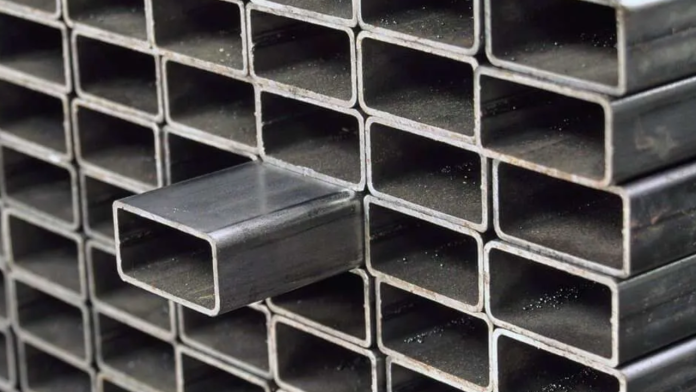Carbon steel square tubes are flexible structural components broadly used in diverse industries. Regarded for their strength, durability, and price effectiveness, those tubes are available in numerous sizes and thicknesses, making them appropriate for a range of programs. Usually manufactured to ASTM standards, carbon steel square tubes can be handled for more suitable corrosion resistance, making sure of stability even in harsh environments.
The right tube size not simplest affects the physical characteristics of the undertaking but also its functionality and durability. With a huge range of Square Tube– Carbon Steel Square Tubes Size available, each offering specific properties and advantages, making an informed choice is vital. As the demand for tailor-made solutions keeps growing, engineers should be equipped with insights and expertise to manual their own decisions.
Considerations for Selecting Square Tube Sizes for Custom Engineering Projects
On the subject of custom engineering projects, choosing the right square tube size is essential for ensuring structural integrity and overall performance. Different factors need to be evaluated to make a knowledgeable decision. This article outlines essential considerations, inclusive of load requirements, software environment, manufacturing tactics, and price implications.
Load Requirements and Structural Integrity
The first consideration while choosing square tube sizes is the weight necessities of the project. Knowing the sorts of loads static, dynamic, or impact is important in figuring out the best size and thickness of the tube. The scale of the square tube at once impacts its capacity to support weight and face up to bending or deformation. Consulting engineering requirements and load tables can assist in determining the important dimensions for structural integrity and safety.
Application Environment and Conditions
The environmental conditions in which the square tube could be used play a significant function in size choice. Elements that include temperature fluctuations, humidity ranges, and exposure to corrosive materials can affect the tube’s overall performance. For instance, in outdoor packages, a bigger diameter tube may be required to resist environmental stressors. Understanding the precise conditions of the application will make sure that the selected tube size gives the necessary sturdiness and resistance.
Manufacturing and Fabrication Processes
The manufacturing and fabrication approaches are some other important considerations. The chosen square tube size needs to align with the skills of the available fabrication system. Larger tubes might also require specialized tools and techniques for cutting, welding, and assembling. Additionally, the complexity of the layout can affect the dimension selection; complicated designs might also necessitate smaller tube sizes for higher maneuverability and becoming. Information on the production abilities will facilitate a smoother fabrication system.
Cost Implications and Budget Constraints
Cost is continually an essential issue in any engineering challenge. Larger square tubes usually cost greater in phrases of substances and transport. Additionally, custom reducing or extra machining processes may further increase expenses. It’s important to strike a stability between best and price whilst deciding on sizes. Evaluate the financial constraints of the challenge while thinking about the long-term benefits of making an investment within the proper size for the most desirable performance and protection.
Material Properties and Specifications
Different kinds of carbon steel square tubes possess various material properties that may affect size selection. As an example, better-grade steel may additionally allow for thinner partitions even while still providing the specified power, probably decreasing weight and price. Information on the mechanical properties, inclusive of yield strength and tensile strength, will help in deciding on a size that meets each practical requirement and regulatory requirement. Proper fabric choice ensures toughness and durability inside the final design.
Design Specifications and Standards
Adhering to layout specifications and enterprise standards is important when selecting square tube sizes. Requirements along with ASTM A500 provide suggestions on dimensions and mechanical homes of steel tubes. Depending on the application, compliance with unique regulatory necessities can be mandatory. Ensuring that the chosen size meets those requirements will not only improve safety but also simplify the approval method for engineering designs.
Supplier Capabilities and Availability
The availability of carbon square tube sizes from suppliers is another important factor. Now not all providers can also stock identical dimensions or grades of metal, which may affect venture timelines. Attractive with a couple of providers to recognize their inventory and custom abilities can provide insights into available options. Ensuring that the chosen size is effective to be had or can be sourced promptly will facilitate smoother challenge execution and decrease delays.
Regulatory Compliance and Safety Standards
Ensuring compliance with nearby and global safety standards is important when choosing square tube sizes. Rules can also dictate precise dimensions, materials, and programs to sell protection and reliability. Discovering applicable codes and tasty with industry experts can guide compliance necessities. Prioritizing safety and regulatory concerns will not best guard stop-customers, however, additionally guard the recognition of the engineering firm concerned inside the undertaking.
Conclusion
Selecting the proper carbon square tube size for custom engineering initiatives requires careful consideration of different factors, together with load requirements, environmental situations, production methods, fee implications, and compliance with standards. By thoroughly comparing those issues, engineers could make informed decisions that result in success and sustainable results. A thoughtful technique to size selection will beautify the overall performance and safety of the engineering undertaking, in the long run accomplishing the favored goals and objectives.
















